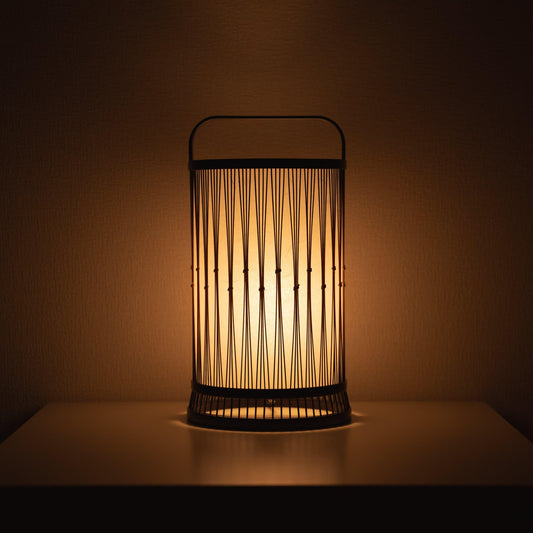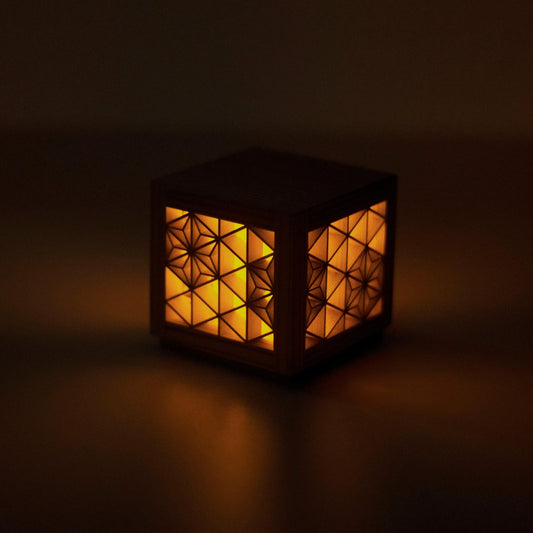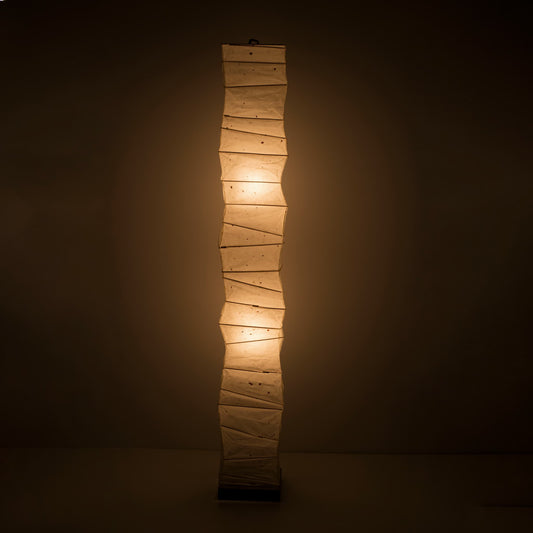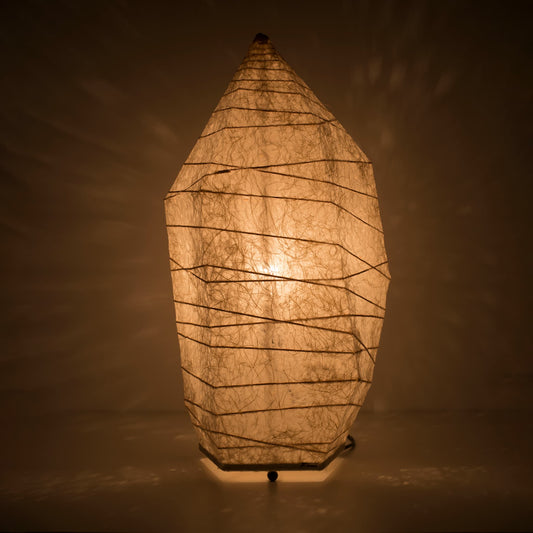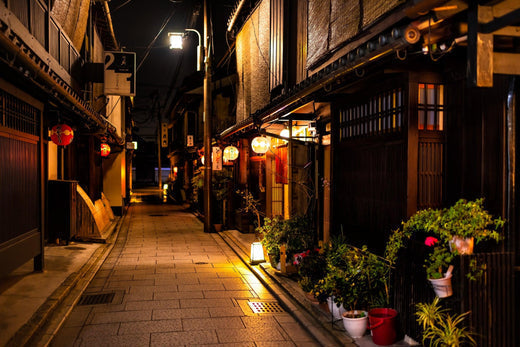
Traditional Japanese Lighting Guide for modern space
Share
Table of contents
Japanese Lanterns: Illuminating the Night with Tradition

Japanese lanterns, known as "Chochin", have been a staple of Japanese culture for centuries, their soft glow illuminating homes, streets, and festivals. These beautiful and practical lanterns come in various forms, each with its unique history and charm. From the delicate "Snow Lantern(Bonbori)" used in Hinamatsuri (Doll's Festival) to the sturdy "Toro" found in temples and gardens, Japanese lanterns continue to captivate with their timeless elegance. This article delves into the types, history, and modern uses of Japanese lanterns, exploring their enduring appeal and cultural significance.
Japanese Lanterns: A Guide to Types & History
Snow Lantern (Bonbori)

Snow Lanterns, or Bonbori, are decorations seen in Hinamatsuri, an important annual event in Japan wishing for the growth and happiness of girls. These lights are wrapped in paper or cloth, gently illuminating the outside, hence the name "Bonbori," derived from words like "honnori" (faintly) and "bonyari" (dimly). Their soft light is likened to light leaking from a snow hut. Another theory suggests the name comes from the lanterns used in tea ceremonies. In Hinamatsuri, Bonbori is placed on both sides of the O-Hina-sama (male and female dolls), serving as essential lighting fixtures to illuminate the wedding ceremony.
Andon

Andon became widespread in Japan between the Muromachi and Edo periods. Initially used as portable lighting, it later became primarily an indoor illumination tool. The structure consists of a frame made of bamboo, wood, or metal, covered with Japanese paper, with a burning wick in an oil dish. This design provides a soft light while protecting the flame from the wind. Rapeseed oil and fish oil were used as fuel, but Andon gradually disappeared with the spread of kerosene lamps in the Meiji era. However, even in the 21st century, they are still used as interior decorations in Japanese-style inns or as electric stands with light bulbs or LED bulbs. There are various types, including Oki-Andon, Kake-Andon, Enshu-Andon, Ariake-Andon, Shoken-Andon, Hachiken-Andon, and Tsuji-Andon, each with specific uses and functions.
Chochin

Chochin is a traditional Japanese lighting fixture made of bamboo and paper. It has an expandable frame covered with paper and a candle stand at the bottom. It can be carried by hand, and its functionality and beauty made it widely used for nighttime illumination and festivals in the past. Introduced from China, its foldable structure was devised in the Muromachi period, and it became popular among common people in the Edo period. Today, many use light bulbs and are mainly used for festivals, signboards, and interiors. They are especially prized as items with special meaning at shrines, during Obon, and at funerals.
Toro

Stone lanterns (tōrō) are traditional lighting fixtures in East Asia, widely used in Japan, China, the Korean Peninsula, and Vietnam. Originally created to protect the flame from wind by enclosing it in a "basket," their forms range from small paper and wood to sturdy stone or metal ones used in temples and gardens, and even to movable ones like paper lanterns and andon. Brought to Japan with the introduction of Buddhism, they have been made in large numbers since the Nara period for temple construction and used in shrines as offering lights during the Heian period. Traditionally, they were lit with oil or candles, but modern versions may use electricity or propane gas.
Modern Japanese Lighting: Japandi Style Ideas
Incorporating Japanese lanterns into contemporary interiors is a popular way to appreciate their beauty and cultural significance. The Japandi style, a recent trend in interior design, blends the Japanese aesthetic of "Wabi-Sabi" (finding beauty in imperfection) with the Scandinavian concept of "Hygge" (coziness and well-being). This fusion creates serene and inviting spaces that emphasize natural materials, simplicity, and functionality. Japanese lanterns, with their soft, warm light and natural materials, seamlessly integrate into Japandi interiors, adding a touch of traditional elegance and tranquility.
Japanese Lighting Ideas for Your Home
Japanese lighting fixtures can be a captivating addition to modern homes. Andon, for example, can be placed in hallways or bedrooms to provide soft, atmospheric lighting. Chochin can be hung in living rooms or dining areas to create a focal point and add a touch of Japanese charm. These traditional lighting elements blend seamlessly with contemporary design, adding a unique cultural dimension and a sense of tranquility to any space.
Japanese lanterns are more than just light sources; they are symbols of Japanese culture, history, and aesthetics. Their enduring appeal lies in their ability to evoke a sense of tranquility, beauty, and tradition. Whether illuminating a festival, adorning a temple, or adding a touch of elegance to a modern home, Japanese lanterns continue to enchant and inspire. Millennium Gallery Japan offers a curated selection of Japanese lanterns, each meticulously crafted by skilled artisans in Japan. Discover your perfect lantern and immerse yourself in the beauty of Japanese craftsmanship.






